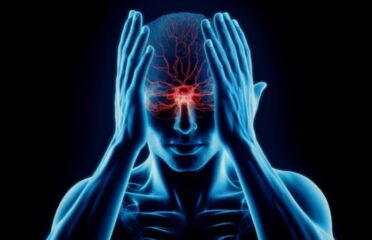Central Pain Syndome
Overview

Central pain syndrome is a debilitating condition that affects how you perceive and respond to pain.
It is a long-term neurological disorder that can arise from a variety of causes, including brain or spinal cord injuries, strokes, and chronic pain.
The symptoms of central pain syndrome can be severe and persistent, including burning, aching, or stabbing sensations, increased sensitivity to touch or temperature, and muscle stiffness or spasms.
Unfortunately, treatment options for this condition are often limited and may involve a combination of medications, physical therapy, and lifestyle modifications. If you are experiencing symptoms of central pain syndrome, it is important to seek medical advice and explore all available treatment options with your healthcare provider.
Symptoms
• Chronic Pain: Continuous discomfort, tingling, or numbness in the hand can hinder daily activities.
• Weakness and Muscle Atrophy: Prolonged pressure on the median nerve can cause weakness and muscle wasting.
• Task Difficulty: Reduced hand coordination and grip strength can impede fine motor tasks.
• Functional Impairment: Decreased dexterity may hinder activities like writing or typing.
• Reduced Quality of Life: Persistent symptoms can impact overall well-being and daily functioning.
• Work Limitations: Severe symptoms may interfere with job performance and productivity.
Causes & Risks
• Central Pain Syndrome (CPS) can stem from various factors, including brain or spinal cord injury, chronic pain, or neurological disorders.
• Understanding these potential causes is crucial for recognizing and addressing CPS effectively.
• Brain and spinal cord injuries, whether from trauma or disease, are common triggers for CPS development.
• Chronic pain conditions like fibromyalgia or multiple sclerosis can also contribute to CPS symptoms.
• Preventing injuries and managing health conditions can reduce CPS risk. Be proactive for good health.
• Awareness of CPS empowers individuals to take preventive measures and seek timely medical intervention.
Test & Diagnosis
• Diagnosing Central Pain Syndrome (CPS) presents challenges due to the subjective nature of pain and its variability among patients.
• Reliable tests such as Electroencephalography (EEG), Magnetic Resonance Imaging (MRI), Magnetoencephalography (MEG), and Positron Emission Tomography (PET) scans are instrumental in diagnosis.
• These diagnostic tools provide healthcare providers valuable insights into the underlying neural activity and structural abnormalities associated with CPS.
• Utilizing advanced imaging techniques enhances the accuracy of CPS diagnosis, enabling tailored treatment strategies.
• By leveraging these tests, healthcare professionals can better understand the neurophysiological mechanisms contributing to CPS symptoms.
• Access to these diagnostic modalities facilitates more precise identification of CPS, leading to improved patient care and management strategies.
Treatment
• Central Pain Syndrome (CPS) poses challenges without a cure, but treatment options exist to alleviate symptoms.
• Symptoms vary in severity and can be debilitating, impacting quality of life.
• Available treatments encompass medications, physical therapy, nerve blocks, and implanted devices like spinal cord stimulators.
• Managing CPS demands a multidisciplinary approach tailored to individual needs.
• Consulting healthcare professionals is vital to crafting an effective treatment plan.
• Don't let CPS hinder quality of life; explore treatment options with professional guidance.
Living With
Central pain syndrome can significantly impact your quality of life, especially your ability to participate in activities you enjoy.
The prognosis for this condition depends on whether there are any underlying causes present.
If an underlying cause is curable, it is more likely that some of the effects of this condition can be treated or reversed.
However, if the underlying cause is not curable, the best approach is to manage the symptoms of CPS and prevent them from worsening.
Complications
• Central Pain Syndrome (CPS) induces varying degrees of continuous or intermittent pain, ranging from mild to severe.
• Pain sensations can manifest as burning, tingling, or shooting, impacting daily life.
• Sensory abnormalities may include heightened touch sensitivity or reduced sensation.
• CPS-related chronic pain can trigger emotional distress, anxiety, and depression.
• Coping with daily tasks and relationships can become challenging.
• Sleep disruptions stemming from pain exacerbate the physical and emotional burden.

The Content is not intended to be a substitute for professional medical advice, diagnosis, or treatment. Always seek the advice of your physician or other qualified health provider with any questions you may have regarding a medical condition.
Know more about
Our Healthcare Planner
Personal Health Planner at BNC is a support staff who listens to your concerns and connects you with a Neuro Care provider. They prioritize your needs and create a trusting relationship between you and the provider.
Three fundamental values we can assure you:
1. Personalized Healthcare.
2. Most advanced robotic therapies
3. Transparent pricing





